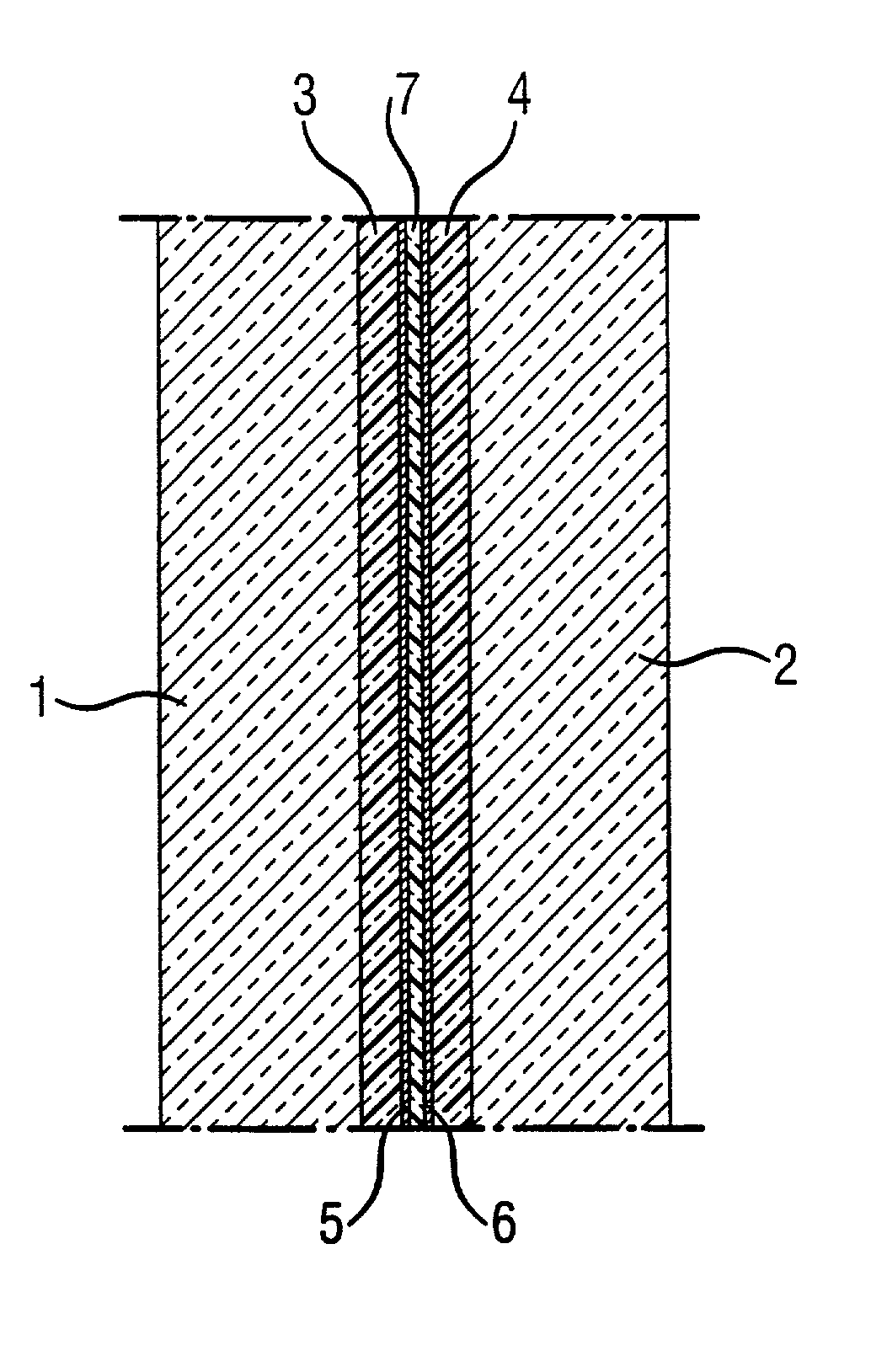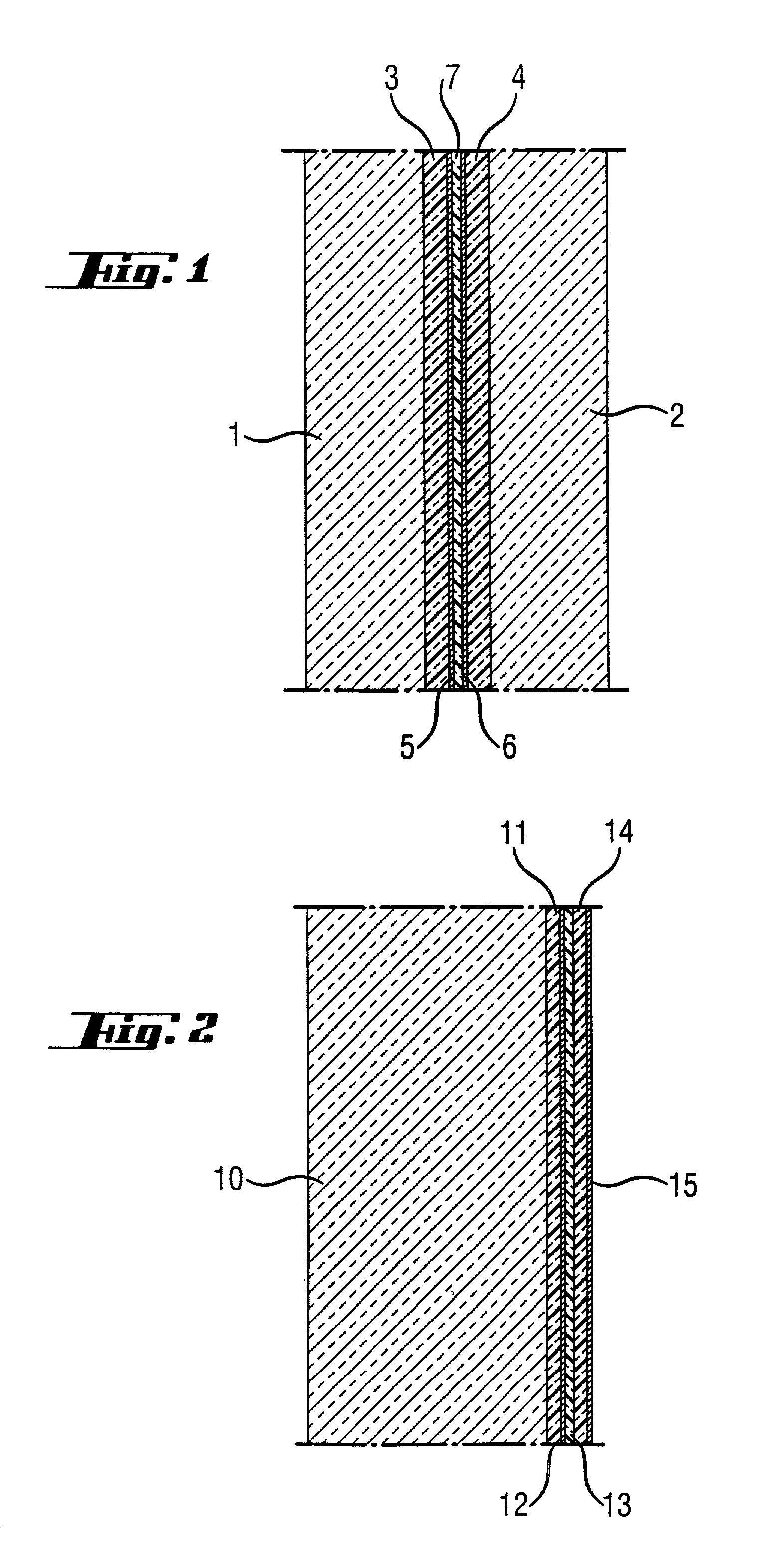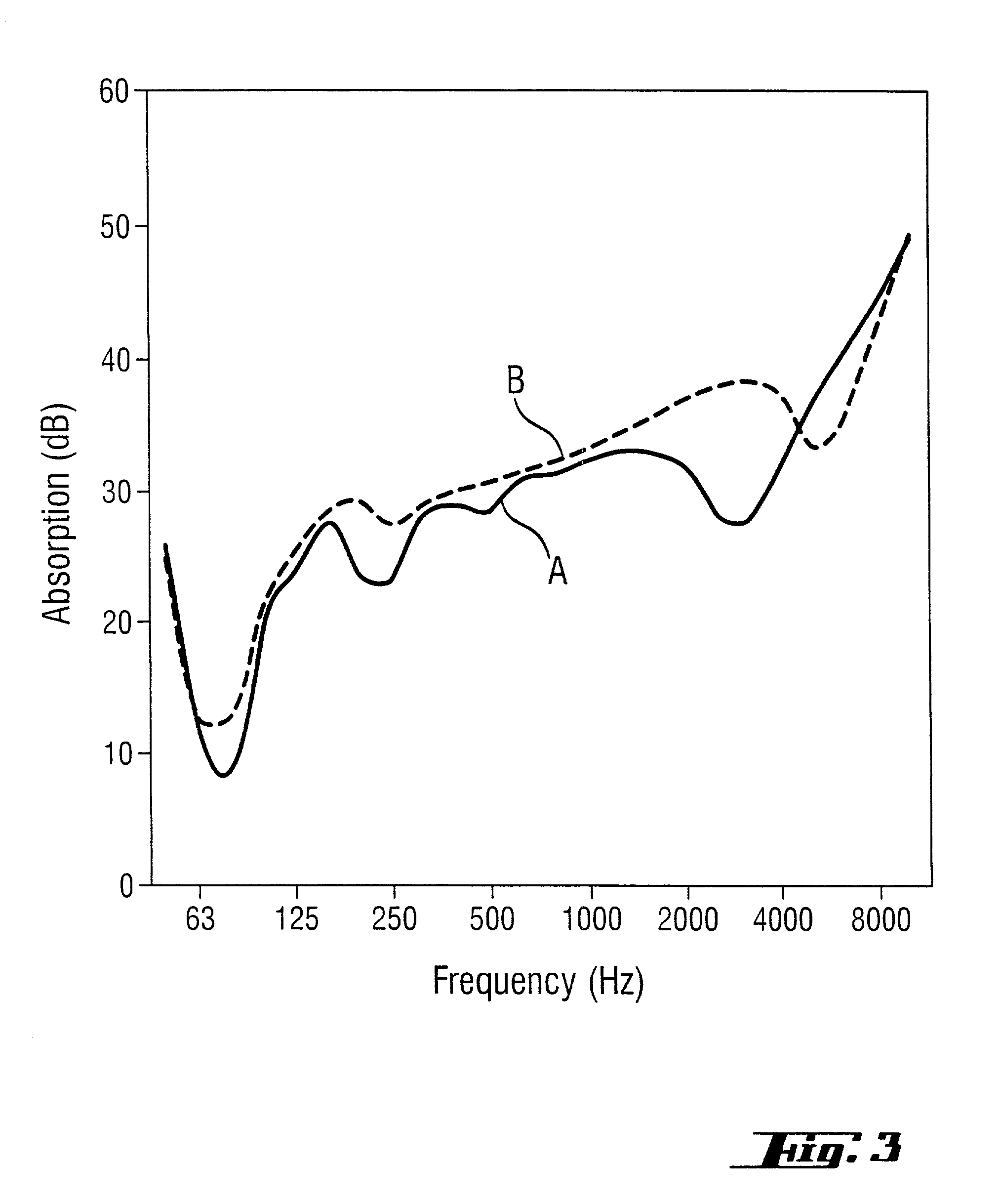Soundproofing laminated window for vehicles
a technology for laminated windows and vehicles, applied in the field of vehicles windows, can solve the problems of deterioration of noise-damping properties, low sound-damping performance, and low production efficiency of known sound-damping laminated windows, and achieve good general sound-damping and noise-damping effects
- Summary
- Abstract
- Description
- Claims
- Application Information
AI Technical Summary
Benefits of technology
Problems solved by technology
Method used
Image
Examples
Embodiment Construction
[0058] FIG. 1 is a partial cross-sectional view of the structure of a laminated window such as used for windshields and also increasingly for the side windows and rear windows. Of course, it is also possible to use the same structure for windshields and rear windows of automobiles, possibly with silicate-glass sheets of slightly different thicknesses.
[0059] The laminated window is made of two silicate glass sheets 1, 2 each 1.8 to 3 mm in thickness, two polyvinylbutyral layers 3, 4 each 0.38 mm in thickness, two thin PET films 5, 6, and one film 7 of viscoelastic acrylic polymer interposed between the PET films. The PET films 5, 6 respectively have a thickness of 0.05 mm. The film 7 consists of a film of Scotchdamp polymer of 0.05 mm thickness, of ISD 112 type, made by 3M. The different layers are juxtaposed in the manner that is standard for fabrication of laminated windows, and they are assembled at elevated temperature and under pressure.
[0060] The PET film 5 or the PET film 6 ca...
PUM
| Property | Measurement | Unit |
|---|---|---|
| frequency | aaaaa | aaaaa |
| frequency | aaaaa | aaaaa |
| temperature | aaaaa | aaaaa |
Abstract
Description
Claims
Application Information
 Login to View More
Login to View More - R&D
- Intellectual Property
- Life Sciences
- Materials
- Tech Scout
- Unparalleled Data Quality
- Higher Quality Content
- 60% Fewer Hallucinations
Browse by: Latest US Patents, China's latest patents, Technical Efficacy Thesaurus, Application Domain, Technology Topic, Popular Technical Reports.
© 2025 PatSnap. All rights reserved.Legal|Privacy policy|Modern Slavery Act Transparency Statement|Sitemap|About US| Contact US: help@patsnap.com



